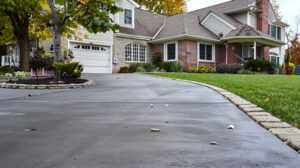Moving to a new home can be exciting. It can offer a fresh start, a chance to explore new restaurants, shops, parks and other local attractions.
However, the process of moving is also time-consuming and stressful. This is why many people choose to hire movers. The cost of hiring movers, however, is not cheap. Contact Movers Idaho Falls for professional help.

Con: You’ll Have to Pay More
Good movers are specialized professionals who use top-quality moving supplies and equipment, which costs money. They’re also trained to provide a wide range of services, like creating and mapping relocation plans, dealing with parking permit issues, providing additional insurance coverage, and much more. These specialized moving services aren’t cheap, but they make the entire relocation process hassle-free and convenient for their clients. Plus, movers often charge by volume rather than weight, which can result in extra fees if they underestimate the size of your shipment. This extra cost can add up. It’s important to calculate all your moving expenses. Moving companies also offer full-value protection, which is a great option.
Pro: You’ll Have a Better Commute
Having a better commute will save you time, money and stress in the long run. It will also make your home life more enjoyable and help you have a healthier work-life balance. A shorter commute will also decrease your gas consumption and car maintenance costs, as well as reduce wear and tear on your vehicle. Moreover, you will likely spend less on public transportation as well.
The commuting time you currently dedicate to driving could be used to sleep more, read, exercise or other personal activities. In addition, your quality of life will be improved as you’ll have more free time to spend with your family and friends. This will improve your mental health, boost your happiness and overall wellbeing.
Getting to and from work can be very stressful, especially during rush hour. If you’re constantly feeling rushed and stressed, then it might be time to consider moving closer to your workplace. A short commute will give you the time to relax before and after your workday and give you a sense of control over your schedule.
You’ll also enjoy the added benefits of a shorter commute, such as reduced traffic delays and congestion, which will help you get to and from your office in a timely manner. You’ll be able to avoid stressful situations like traffic jams and road rage, and you can rest assured that you’ll always be able to leave your house on time for your shift.
If you’re unable to move, you can still cut down on your commute time by finding alternative routes to your job. You may find that taking back roads or traveling during off-peak hours can significantly lower your commuting times. You can also try to figure out the best time of day for traffic in your area, so you can adjust your clock in and out times accordingly.
Lastly, you should know that many employers cover part or all of the cost associated with a worker’s commute. Whether it’s by offering gas vouchers or prepaid public transit cards, you should check to see if your employer offers any financial assistance for those who have to drive a long distance to work.
Con: You’ll Have to Pack Your Own Things
Whether you hire professional packers or do it yourself, you will need to have the supplies to get the job done. This includes boxes of various sizes, bubble wrap, packing tape and a knife or boxcutter. You may also need a couple of garbage bags for trash or used paper, as well as some old towels or blankets to help protect your items from scratches and other damage.
Some of the larger items in your home, like a Peloton bike or a ping-pong table, require special care and packaging. It’s best to contact your movers early to discuss how these pieces should be disassembled and packed. The earlier you start, the easier it will be for everyone involved.
One of the most important things you can do before your move is to put together a suitcase or other container with all your daily essentials, including toiletries, medicines, a few changes of clothing and bed linens. This will make it easy to grab a few items on moving day (or after a long, tiring move), and avoid having to go through several boxes to find them.
If you haven’t already, do a room-by-room purge of everything you own and decide what should stay, what to toss or donate, and what you’re willing to let go. This is a great time to get rid of those unwanted knick-knacks and clutter, and you might be able to sell or give away some of your furniture as well.
When it’s time to pack, begin with the highest priority items. You can even use this opportunity to do a closet purge and pack up the clothes you no longer wear, or those that don’t fit or aren’t in good shape. If you can, use wardrobe or art boxes to prevent wrinkles. Also, be sure to fill any empty spaces in the boxes with extra padding, such as towels, t-shirts or foam. This will keep them stable and prevent the contents from shifting during the move, which could damage your belongings.








